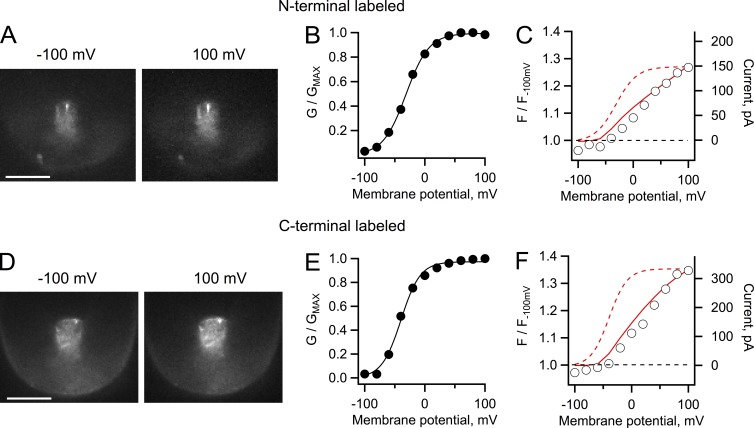Figure 2.
Patch-clamp fluorometry of Venus-Hv1 and Hv1-Venus constructs. (A) Fluorescence images of an inside-out patch from an oocyte expressing Hv1 channels labeled with Venus in the N terminus. The patch was held at the indicated membrane potential. (B) G-V curve from proton currents from the patch in A elicited by depolarizing voltage-clamp pulses. The continuous line is a fit to Eq. 2 with parameters qa = 1.31 eo and V0.5 = −31.2 mV. (C) Fluorescence measured from the whole area of the patch in A at each voltage, plotted as normalized intensity with respect to the fluorescence intensity at −100 mV. (D) Fluorescence images from an inside-out patch from oocytes expressing the Hv1 construct labeled at the C terminus. (A and D) Bars, 10 µm. (E) G-V curve from proton currents from the same patch in D elicited by depolarizing voltage-clamp pulses. The continuous line is a fit to Eq. 2 with parameters qa = 1.56 eo and V0.5 = −39.6 mV. (F) Fluorescence measured from the whole patch area and analyzed as in C. For the analysis in C and F, a ratio greater than one indicates an increase (dequenching) of the fluorescence as the patch is held at increased positive potentials. The red continuous line is the I-V curve from the currents in the corresponding patch, whereas the dashed curve is the fit to the G-V curve. The buffer concentration for these experiments was 10 mM MES, and the pH gradient is as in Fig. 1.

